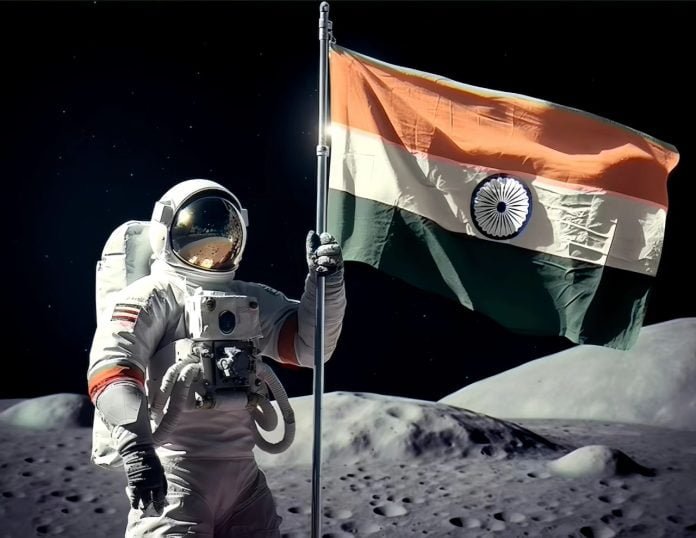Our country, India, famed for its diversified culture, rich history, and ancient traditions, is making waves in the field of space exploration. The ambitious space programme of the nation has been led by the Indian Space Research Organisation (ISRO). ISRO has achieved tremendous breakthroughs in space technology throughout the years, establishing itself as a key actor in the global space community. In this article, we will look at India’s space exploration history, highlighting its extraordinary successes, such as the successful Chandrayaan 3 mission, and evaluating ISRO’s efforts with those of NASA.
From Dreams to Stars:
ISRO’s adventure began in 1969, with a small budget and a small group of scientists. ISRO began its mission after being inspired by India’s first Prime Minister, Jawaharlal Nehru, and his goal of employing space technology for the development of the country. India launched its first satellite, Aryabhata, into orbit in 1975, leading the country into the space age.
India’s Martian Triumph on a Budget: ISRO accomplished a great feat in 2013 when it launched the Mars Orbiter Mission (Mangalyaan) into Mars’ orbit. This accomplishment catapulted India into the ranks of countries capable of interplanetary exploration, and it was accomplished for a fraction of the expense of similar missions carried out by other space organisations. ISRO reported the budget for Mangalyaan to be Rs: 450 Crore.
In an interview with Hindustan Times, Dr. Radhakrishnan, the former chairman of ISRO, talked about how the mission was possible with such a small budget. He said “Isro’s general philosophy is cost-effectiveness. We always adopt a modular approach which gives us a cost advantage, which means we take the base of our earlier proven technology and build on it. Moreover, our scientists and engineers always strive for a schedule-driven approach, which prevents cost overruns. Being time-effective makes us cost-effective.”
Chandrayaan Missions: Moon Mysteries Revealed! ISRO’s Chandrayaan missions have greatly improved our understanding of the Moon. The Chandrayaan-1 lunar mission, launched by India in 2008, assisted in the discovery of water molecules on the Moon’s surface, altering our notions of Earth’s celestial neighbour. The 2019 launch of Chandrayaan 2 was a huge step forward, with an orbiter, lander (Vikram), and rover (Pragyan). Despite technical difficulties with the lander’s attempt to land on the Moon’s surface, the orbiter continues to give crucial data about lunar topography and mineral composition.
India’s Historic Success with Chandrayaan 3 With Chandrayaan 3, India recently achieved a historic milestone. Chandrayaan 3 was launched in early 2023 with the goal of accomplishing something that had previously evaded ISRO: a successful soft landing on the Moon’s south pole. The mission was a spectacular success, with India becoming the first country to accomplish this feat. The most recent information regarding Chandrayaan 3 is that it has completed its mission but cannot be revived to return to Earth. According to a report on Mint, ISRO already said that “if the Pragyan, Vikram duo of Chandrayaan-3 does not wake up, it will forever stay there as India’s lunar ambassador. Vikram and Pragyan are not designed to return to Earth.”
ISRO vs. NASA: The Space Race of the 21st Century While NASA, the United States’ space agency, is undeniably a forerunner in space exploration, ISRO has achieved tremendous accomplishment on a much smaller budget. Let’s take a look at some examples for this below.
• As previously stated, ISRO’s Mars Orbiter Mission, known as Mangalyaan, stands out as an example of cost-effectiveness. Mangalyaan cost around $74 million, which is a fraction of the cost of NASA’s Mars missions. For example, NASA’s Curiosity rover, which arrived on Mars in 2012, cost roughly $2.5 billion. Regardless of its limited resources, Mangalyaan was able to conduct crucial scientific experiments such as investigating the Martian atmosphere, surface, and mineral composition.
• ISRO’s first lunar probe, Chandrayaan-1, launched in 2008, was another example of economical space exploration. The total cost of the mission, including launch and operation, was around $79 million. In comparison, NASA’s Lunar Reconnaissance Orbiter (LRO), which launched at the same time, cost more than $500 million.
• Astrosat, India’s first dedicated multi-wavelength space observatory, was launched in 2015. It cost approximately $25 million to develop. In comparison, NASA’s Hubble Space Telescope, one of the world’s most recognised space observatories, had an initial cost of more than $2 billion. Astrosat has contributed to numerous astronomical discoveries, proving ISRO’s capabilities in the field of astrophysics.
Looking to the Stars: What’s Next? The future of ISRO is bright, with big missions on the horizon. India’s human spaceflight programme, Gaganyaan, intends to send astronauts into space. This effort is in line with India’s ambition to become a space giant. Prime Minister Narendra Modi introduced Gaganyaan back in 2018. According to the Union Minister, Jitendra Singh, Gaganyaan was supposed to be launched by the 75th Indian Independence Day, which was last year, 2022. But it was delayed this long due to the COVID-19 pandemic. India is also currently working side-by-side with the US to send Indian Astronauts to the International Space Station. According to a report from Hindustan Times, they are still in the negotiation stage and have a goal of completing this mission by 2024. India’s journey into space has been nothing short of inspirational. ISRO has evolved from humble beginnings to become a vital performer in the global space community. The successful landing of the Chandrayaan 3 mission on the Moon’s south pole demonstrates India’s dedication to scientific development. We eagerly await the incredible findings that will be made as ISRO continues to push boundaries and explore new territories. Sources: Hindustan Times, Mint, Times of India By: Ashbiha Fathima
